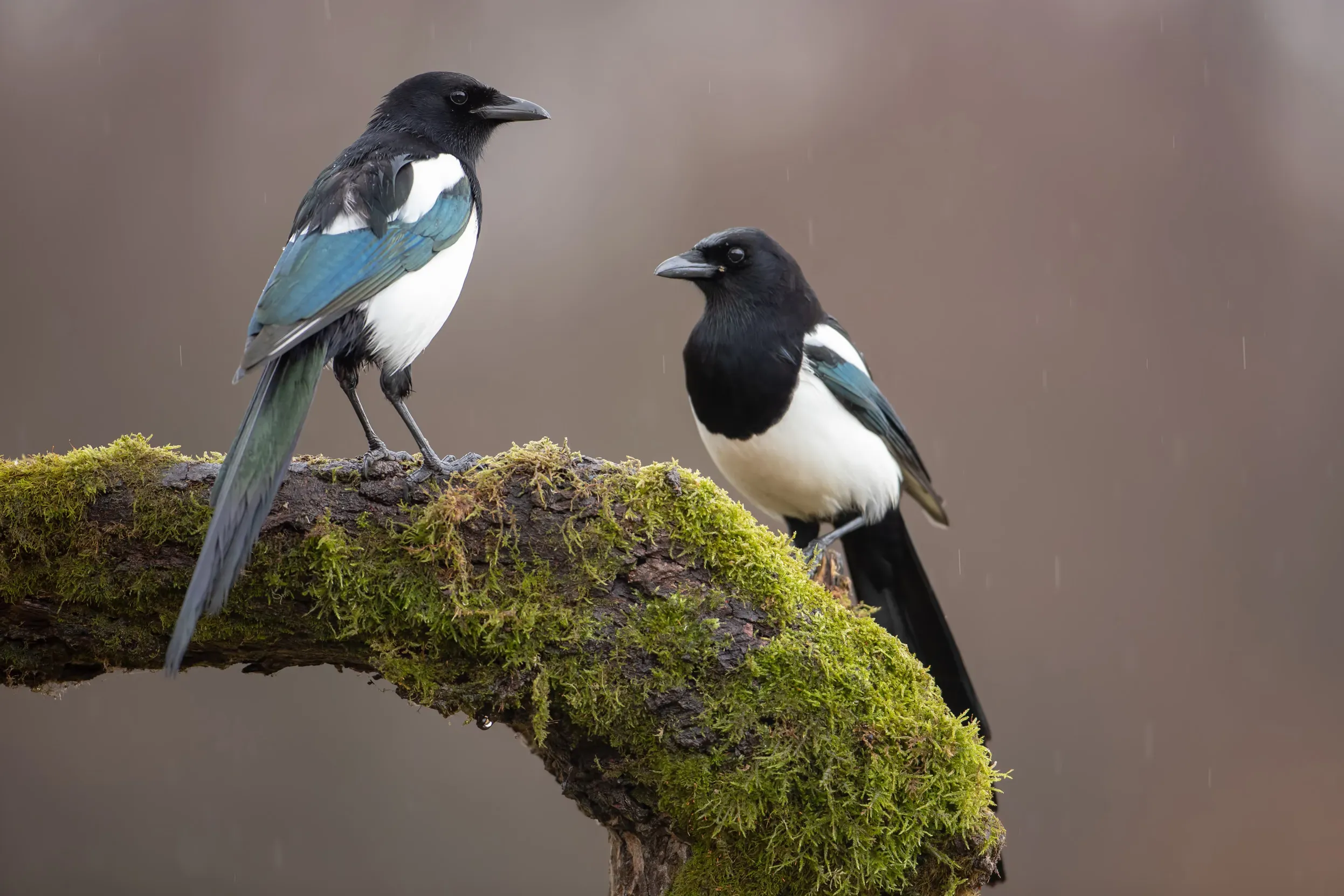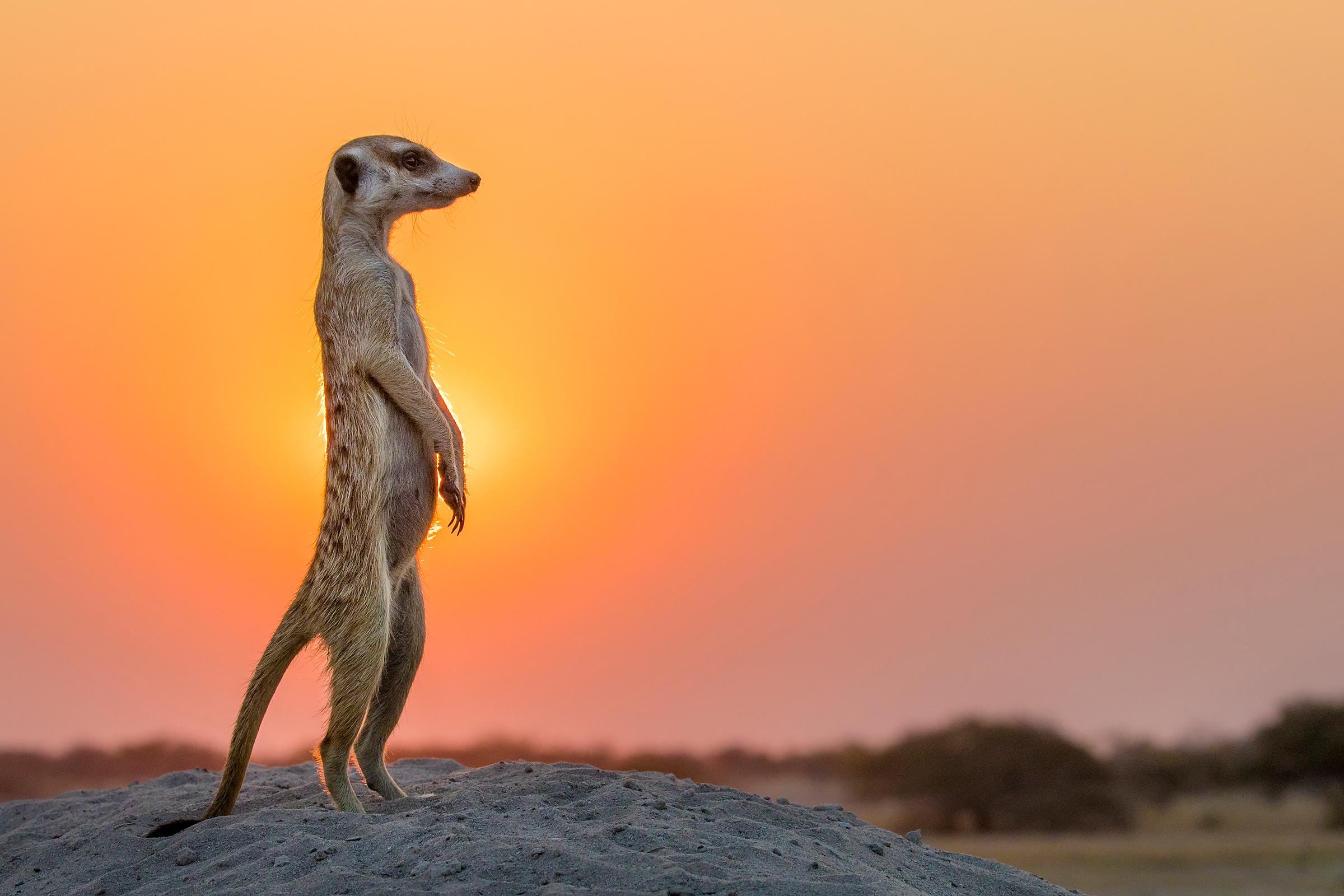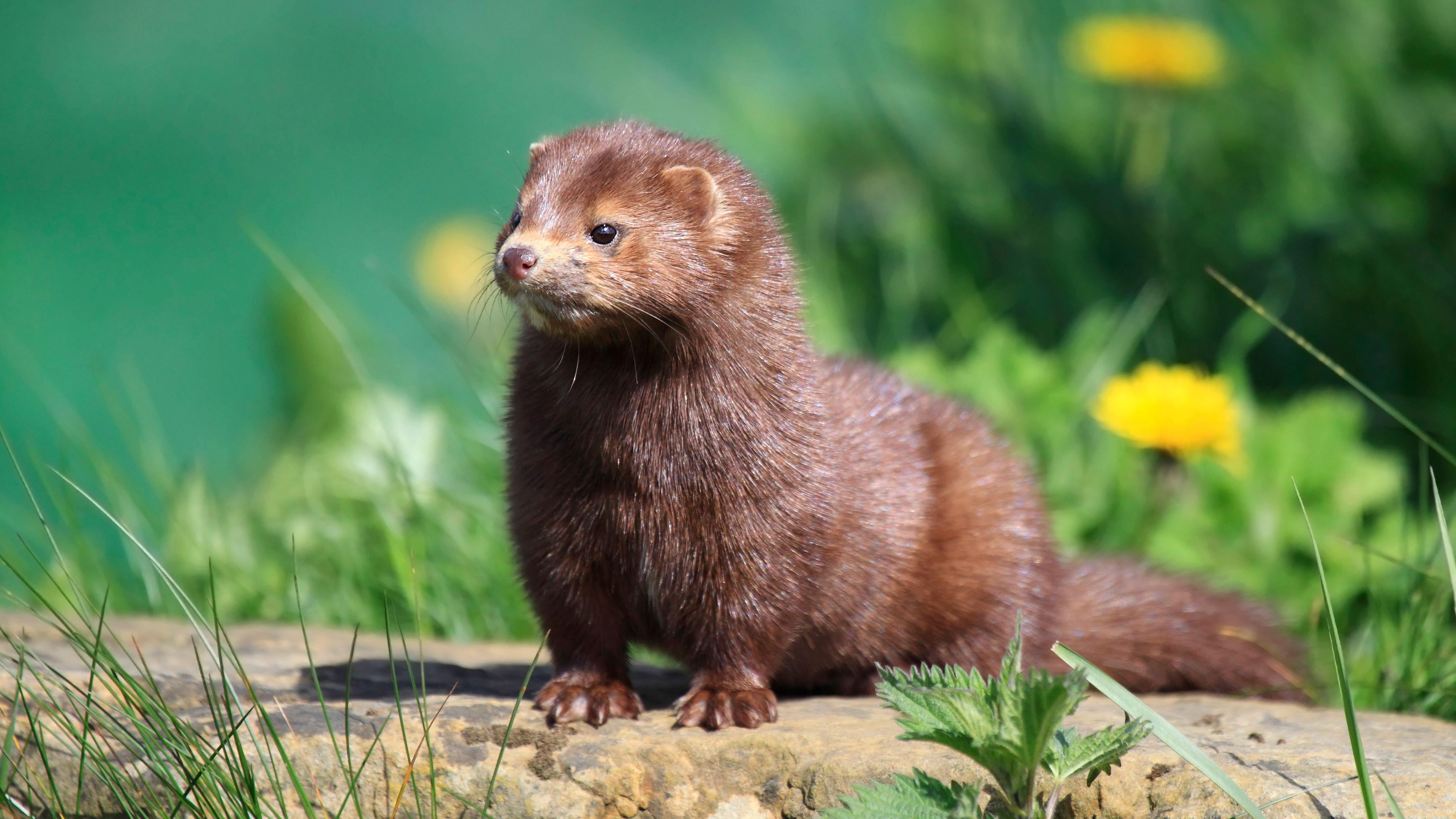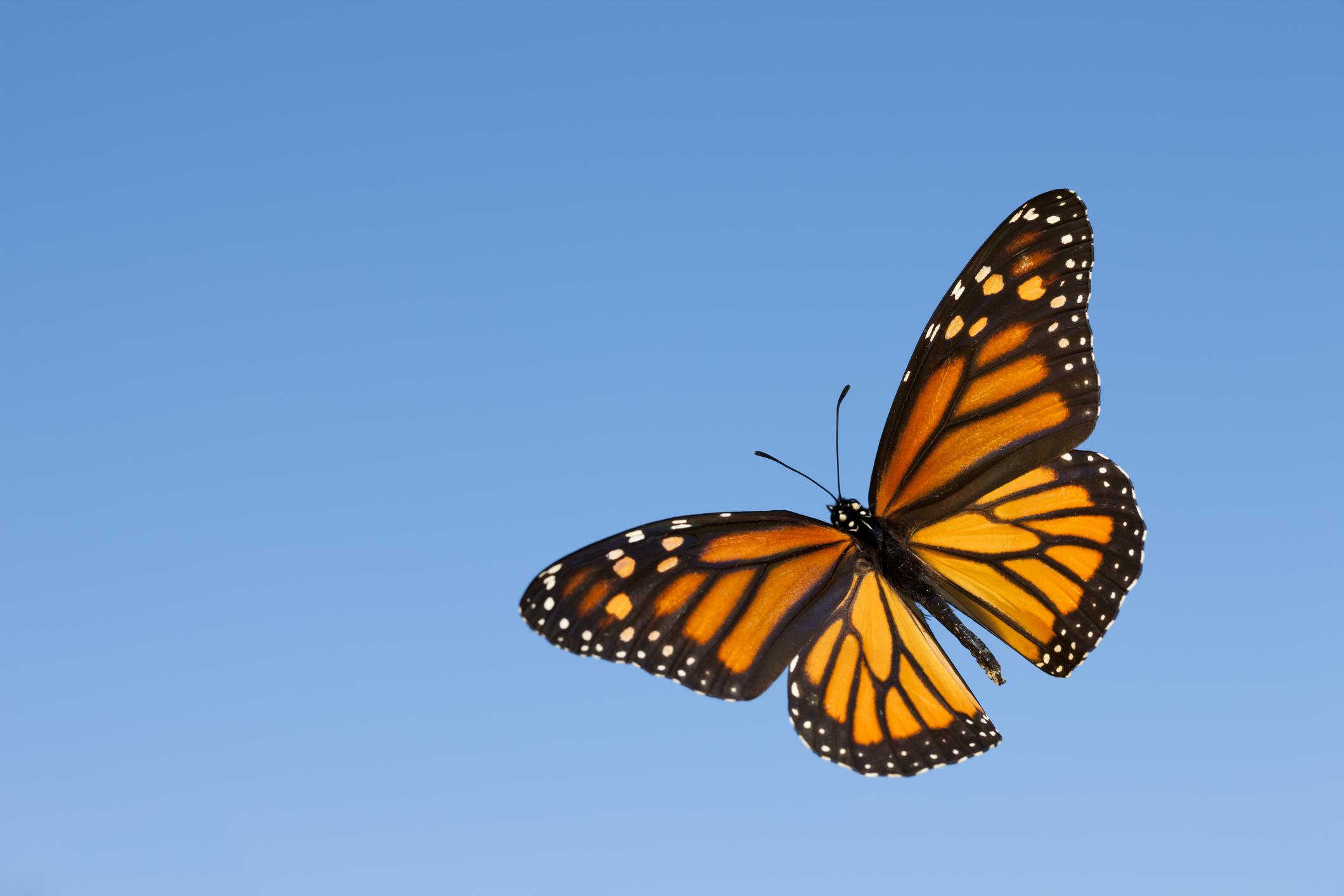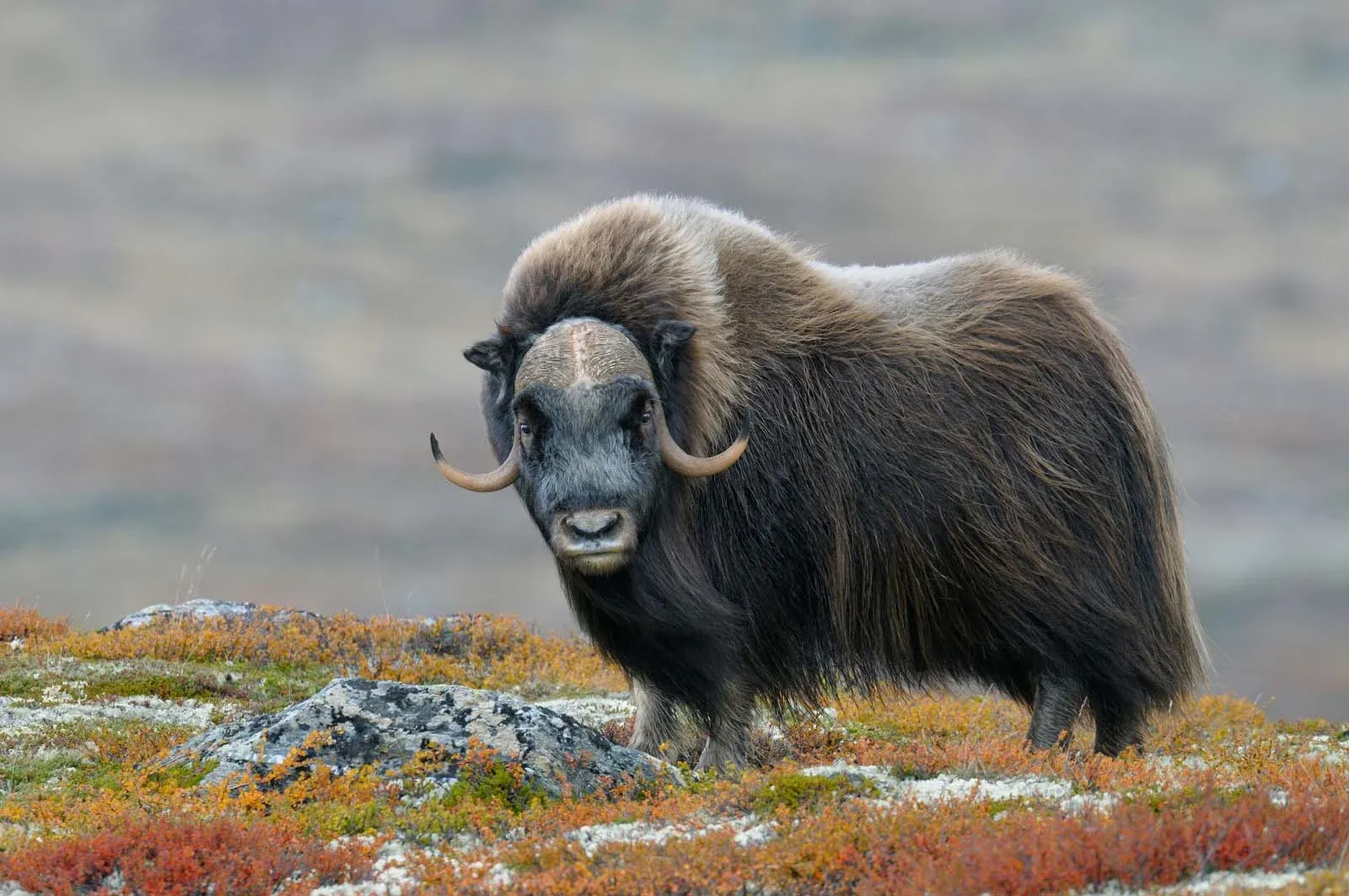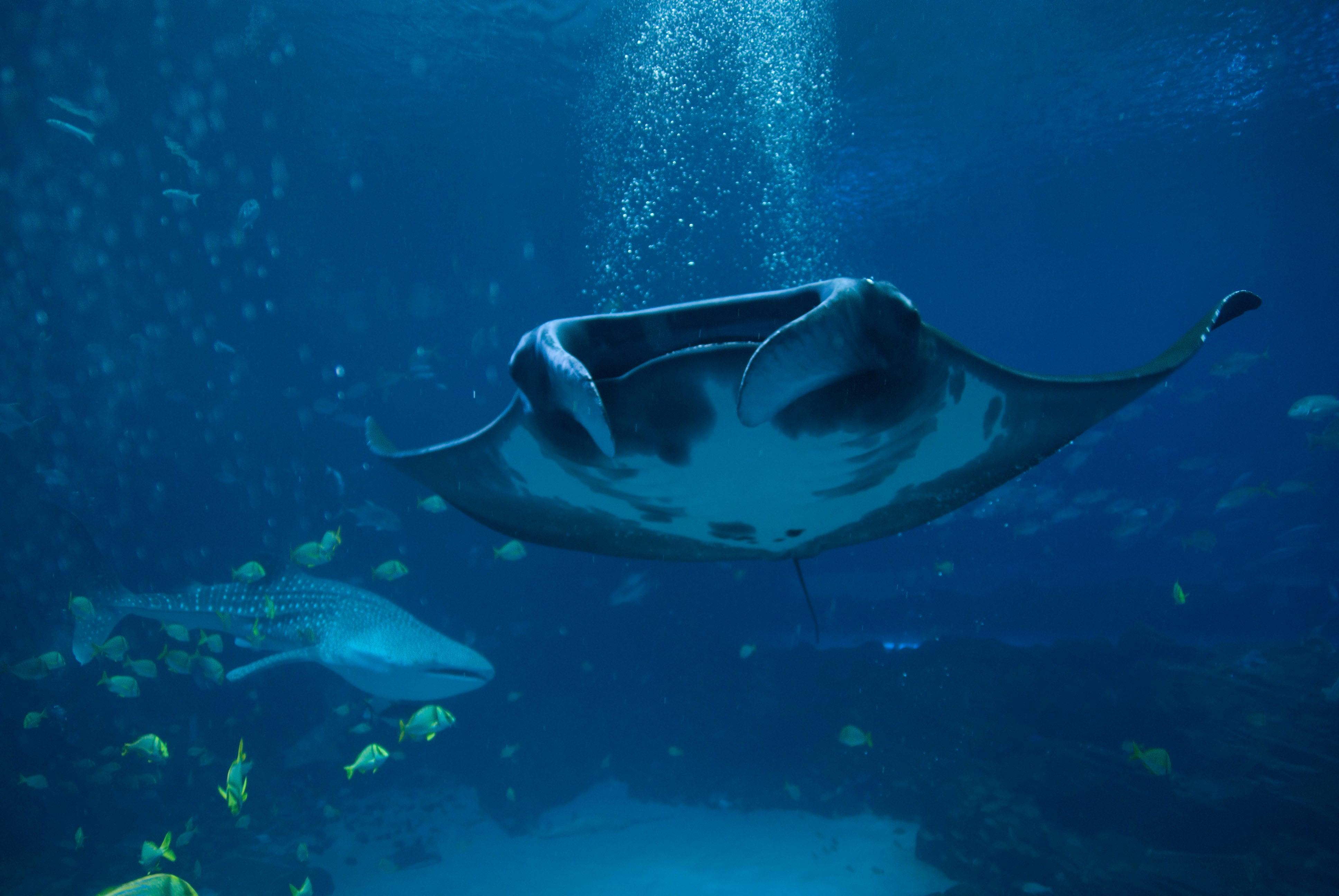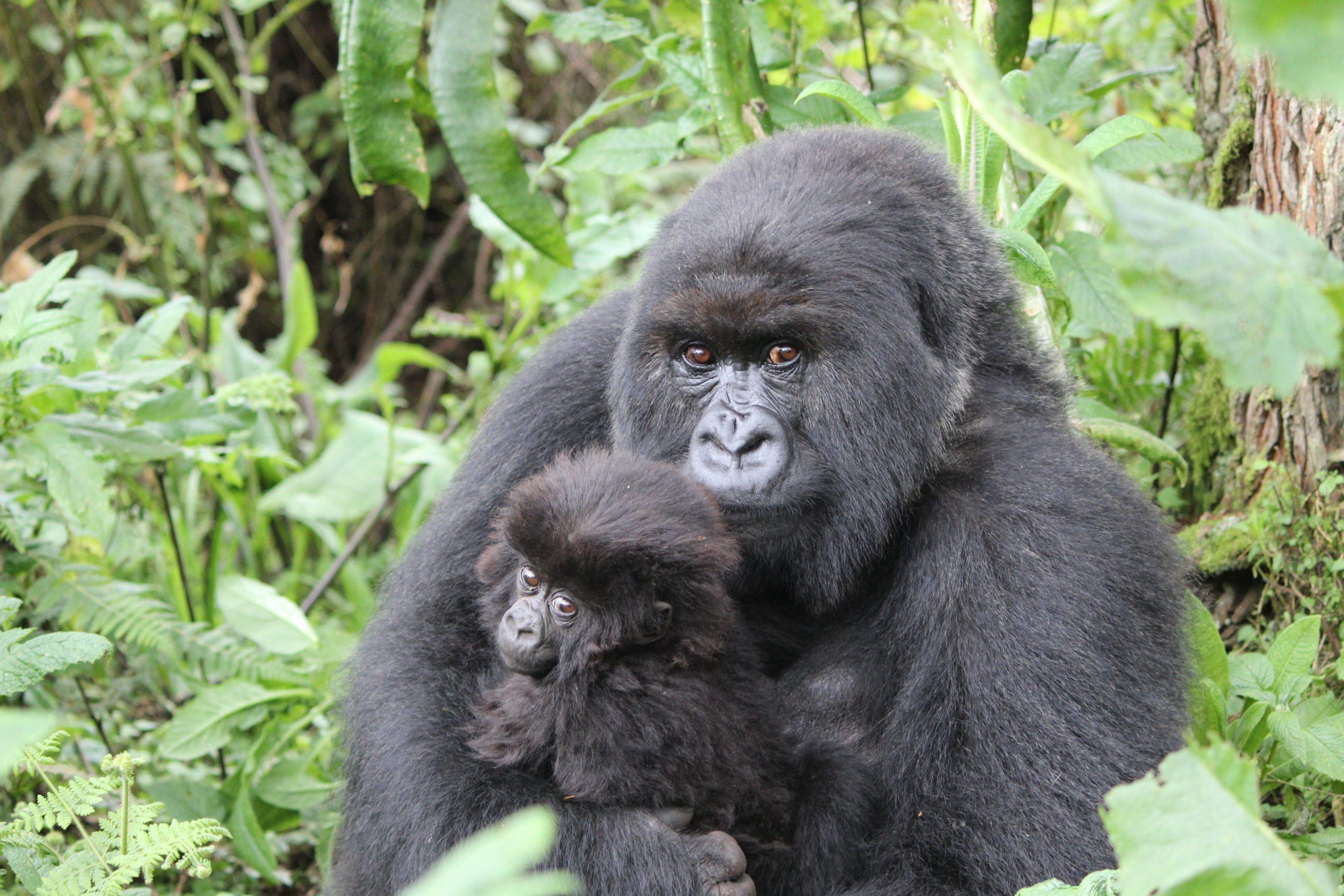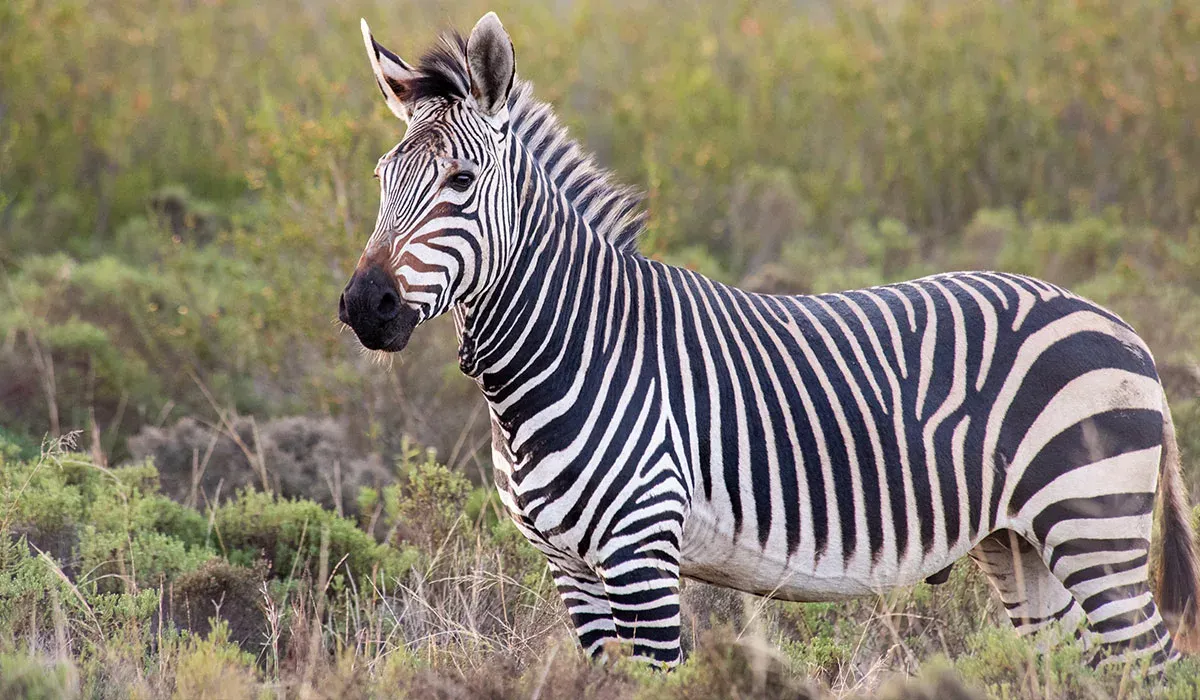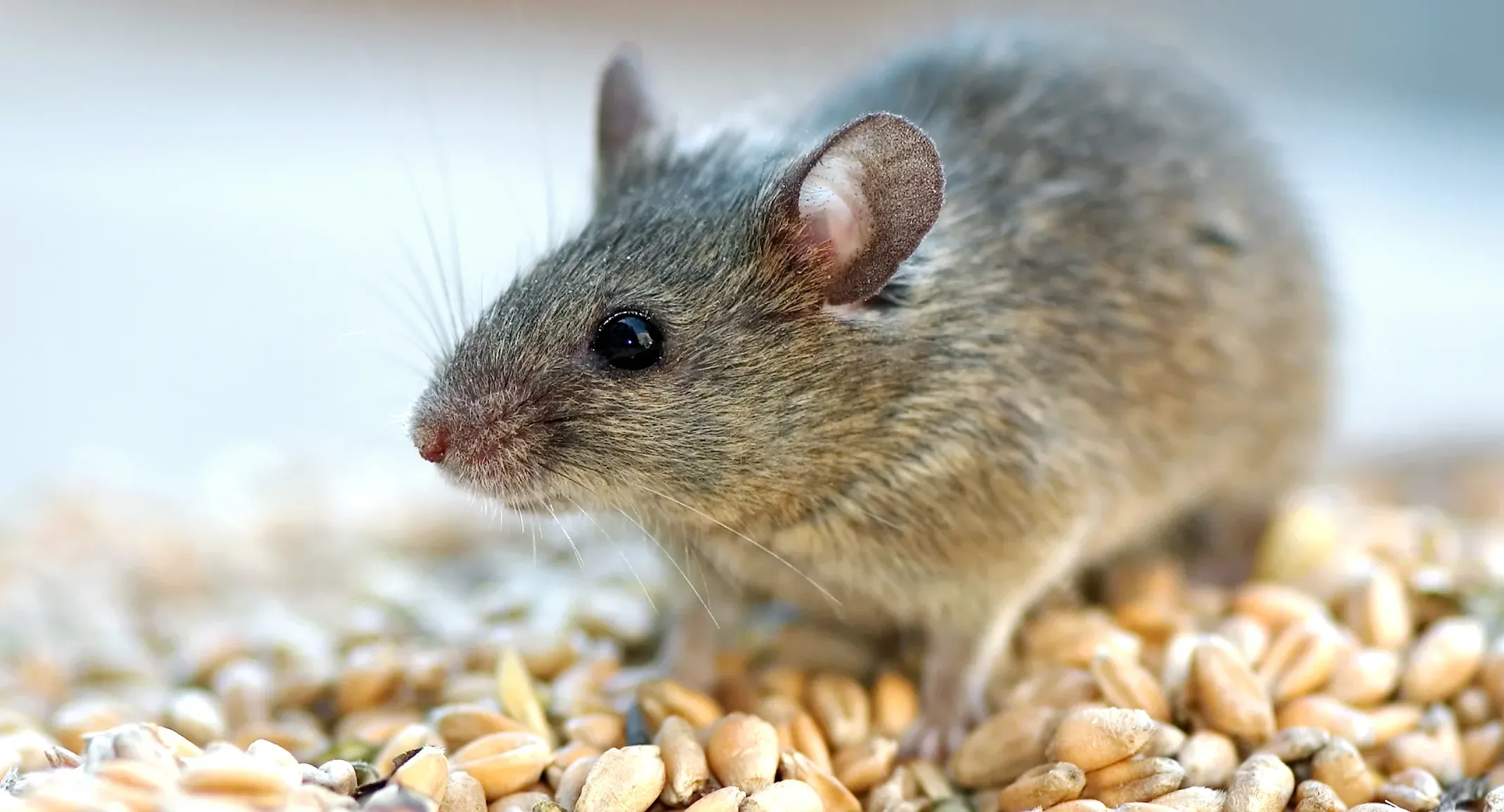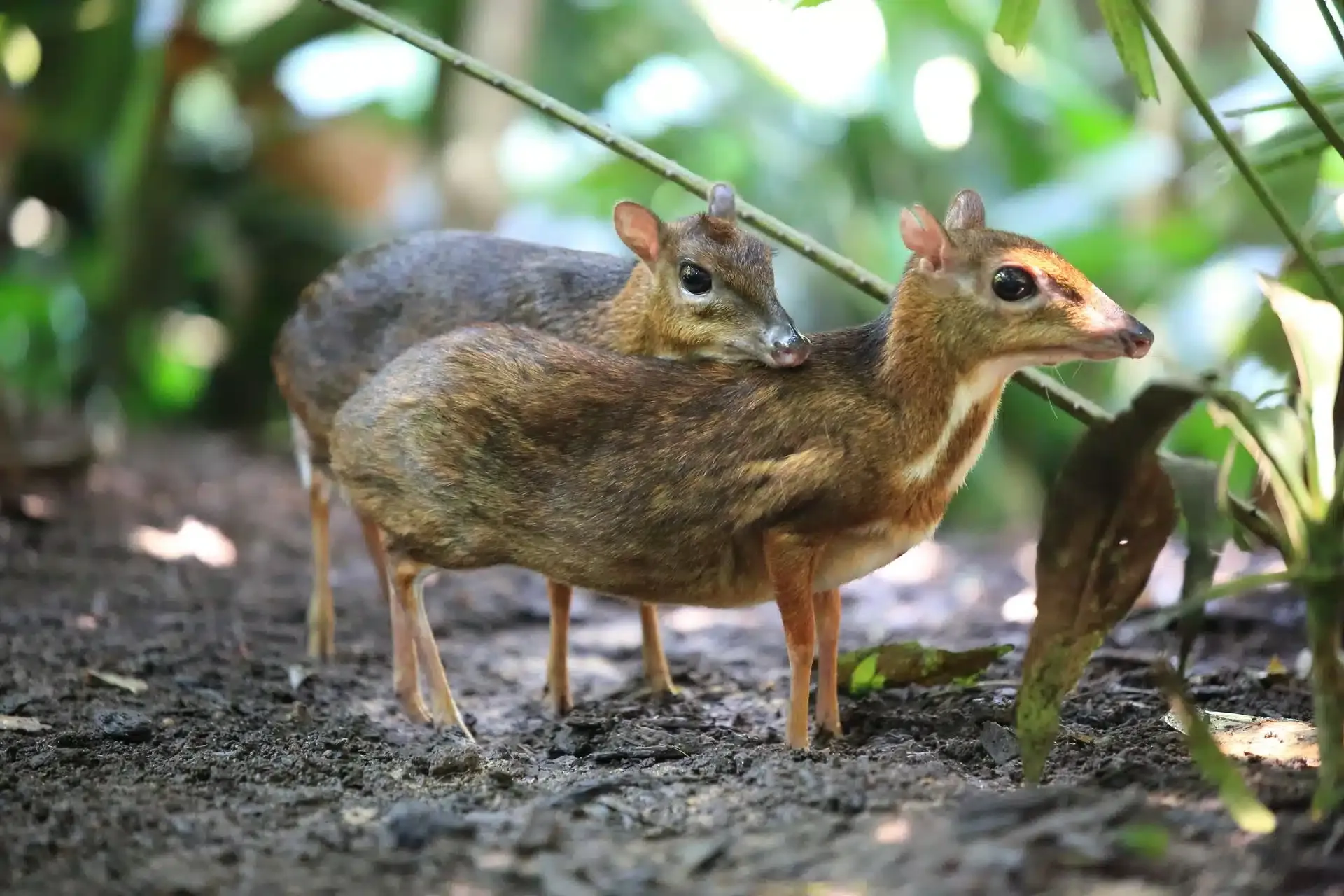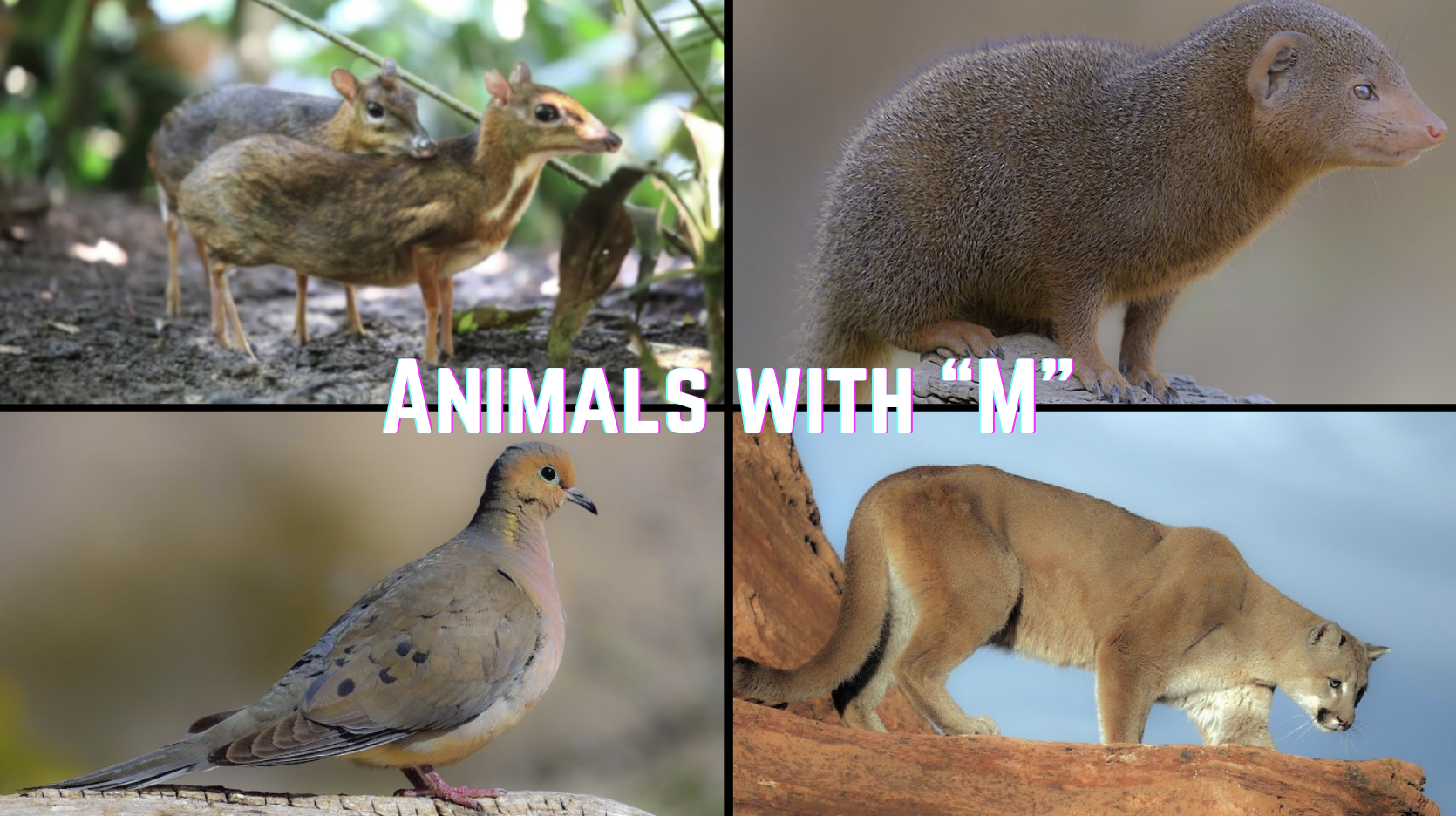
From the mysterious depths of the ocean to the highest mountain peaks, the animal kingdom showcases an incredible diversity of creatures whose names begin with the letter “M.”
Imagine encountering a majestic mountain gorilla in the misty forests of Rwanda or watching a monarch butterfly complete its remarkable 3,000-mile migration.
The letter “M” introduces us to both the mighty and the minute—from massive manta rays gliding gracefully through tropical waters to microscopic maggots that play a crucial role in our ecosystem.
These animals display fascinating adaptations, from the meerkat’s cooperative social structure to the mongoose’s immunity to snake venom.
If they fly, swim, crawl, or run, “M” animals demonstrate nature’s boundless creativity and the incredible diversity of life on the planet. Join us and analyze these magnificent creatures and uncover their remarkable stories.
Common Animals that Start with The Letter “M”
1. Maggot
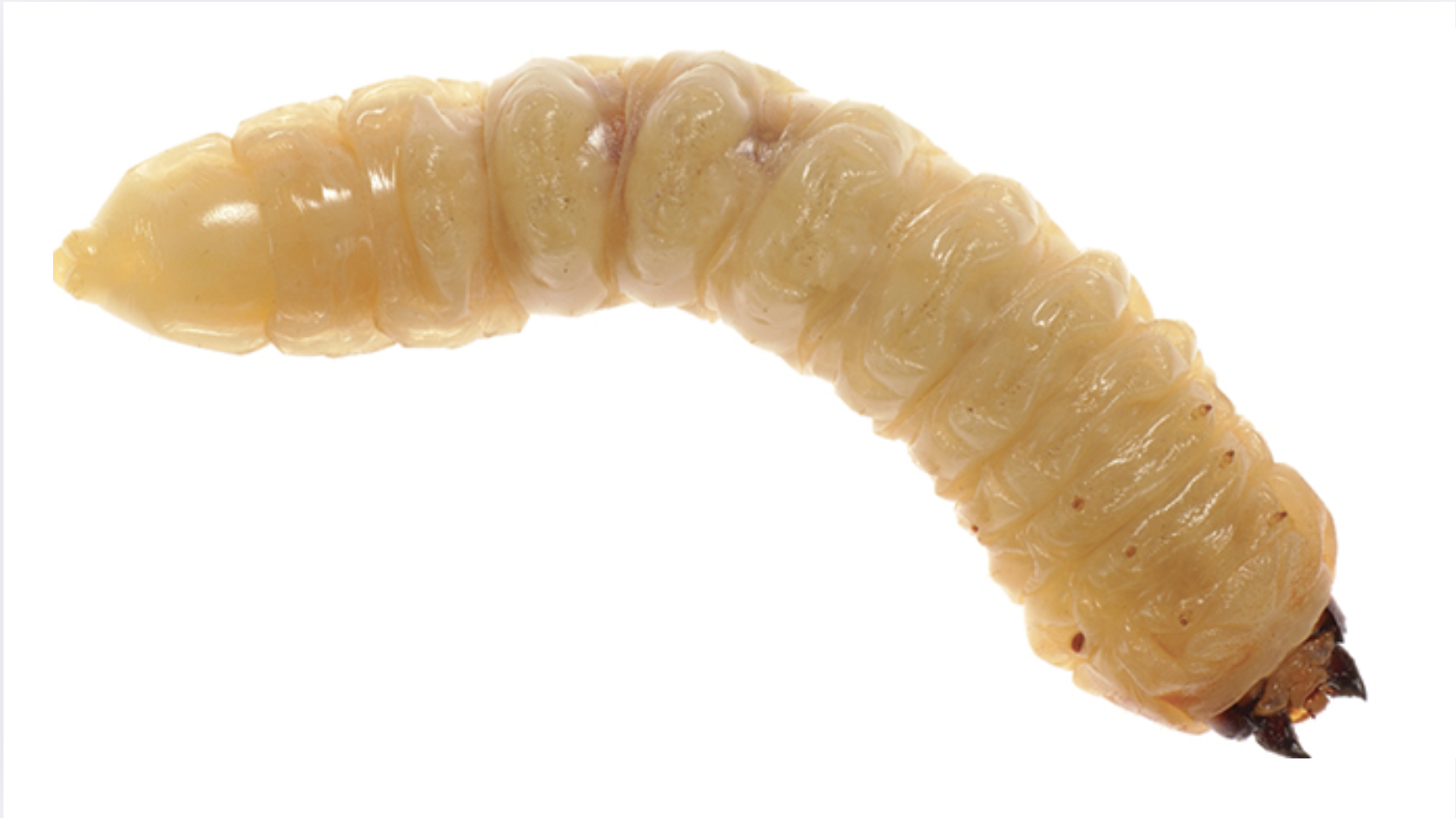
Maggots are the larval stage of flies, particularly common houseflies and blowflies. They are small, soft-bodied, and worm-like in appearance, typically white or pale. Maggots play a crucial role in decomposition by consuming decaying organic matter.
- Region of Habitat: Found worldwide in various environments, particularly in decaying organic material.
- Scientific Name: Varies by species, e.g., Lucilia sericata (common green bottle fly maggot).
- Feeding Habits: Maggots primarily consume decomposing animal and plant matter, aiding in nutrient recycling.
- What Sound They Make: Maggots do not produce sounds but may cause a faint rustling noise when moving in groups.
Fun Facts
Maggots are used in medical treatments, known as maggot therapy, to clean infected wounds. They can survive in extreme conditions, including low-oxygen environments.
2. Magpie
Magpies are intelligent and social birds recognized for their striking black-and-white plumage and long tails. They are part of the Corvid family and are known for their problem-solving abilities and vocal communication.
- Region of Habitat: Found across Europe, Asia, North America, and Australia in woodlands, urban areas, and grasslands.
- Scientific Name: Pica pica (Eurasian magpie).
- Feeding Habits: Omnivorous; they eat insects, seeds, small mammals, carrion, and even human leftovers.
- What Sound They Make: Magpies produce a variety of sounds, including chattering, cawing, and mimicry of other birds.
Fun Facts
Magpies recognize themselves in mirrors, a sign of high intelligence. They have been observed holding funerals for deceased members of their group.
3. Mallard
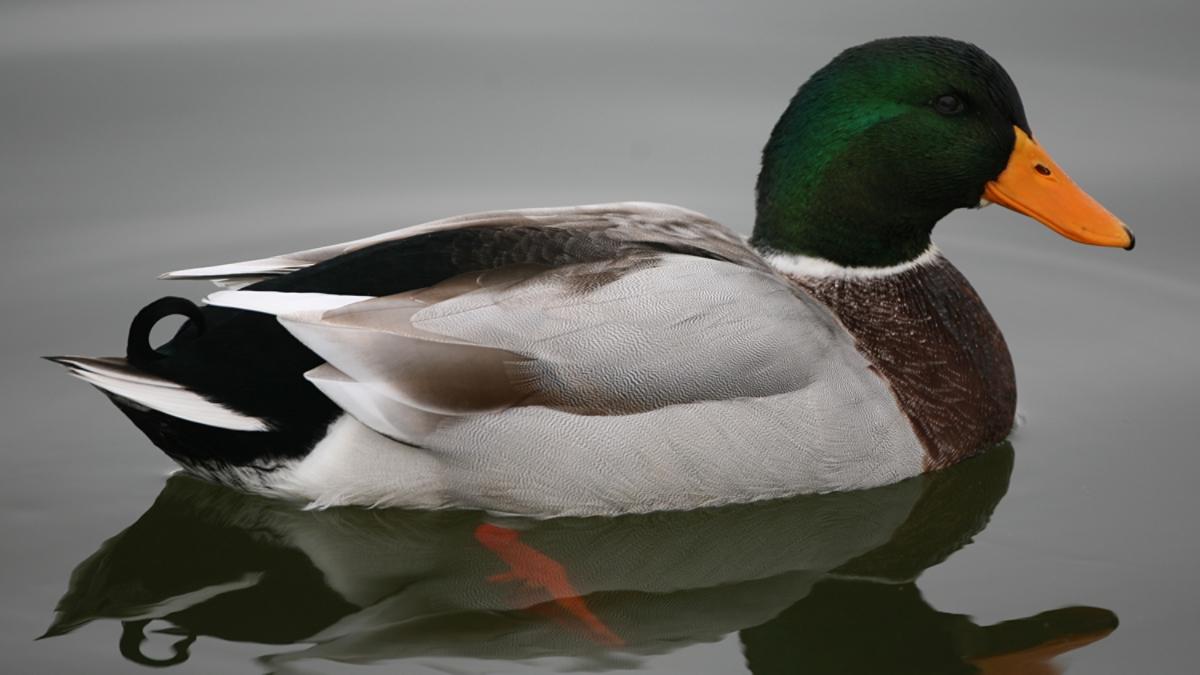
Mallards are one of the most widespread and recognizable species of ducks. Males have distinctive green heads, while females have mottled brown plumage for camouflage. They are highly adaptable and often found in urban ponds and wetlands.
- Region of Habitat: Found in North America, Europe, and Asia in freshwater lakes, ponds, rivers, and marshes.
- Scientific Name: Anas platyrhynchos.
- Feeding Habits: Omnivorous; they eat aquatic plants, insects, small fish, and grains, often dabbling in the water to feed.
- What Sound They Make: Females produce the characteristic “quack,” while males make a softer, raspy call.
Fun Facts
Mallards are the ancestors of most domestic duck breeds. They can sleep with one eye open to stay alert for predators.
4. Meerkat
Meerkats are small, highly social mammals belonging to the mongoose family. They have slender bodies, pointed faces, and dark patches around their eyes, which help reduce the sun’s glare. They live in tight-knit groups and rely on cooperation for survival.
- Region of Habitat: Native to the arid regions of southern Africa, including deserts and scrublands.
- Scientific Name: Suricata suricatta.
- Feeding Habits: Omnivorous; they eat insects, small vertebrates, eggs, and plants, often digging for food with their sharp claws.
- What Sound They Make: Meerkats use a complex system of vocalizations, including chirps, barks, and growls, for communication and warning of predators.
Fun Facts
Meerkats take turns acting as sentinels, standing on their hind legs to watch for danger. They are immune to certain types of venom, including scorpion stings.
5. Mice
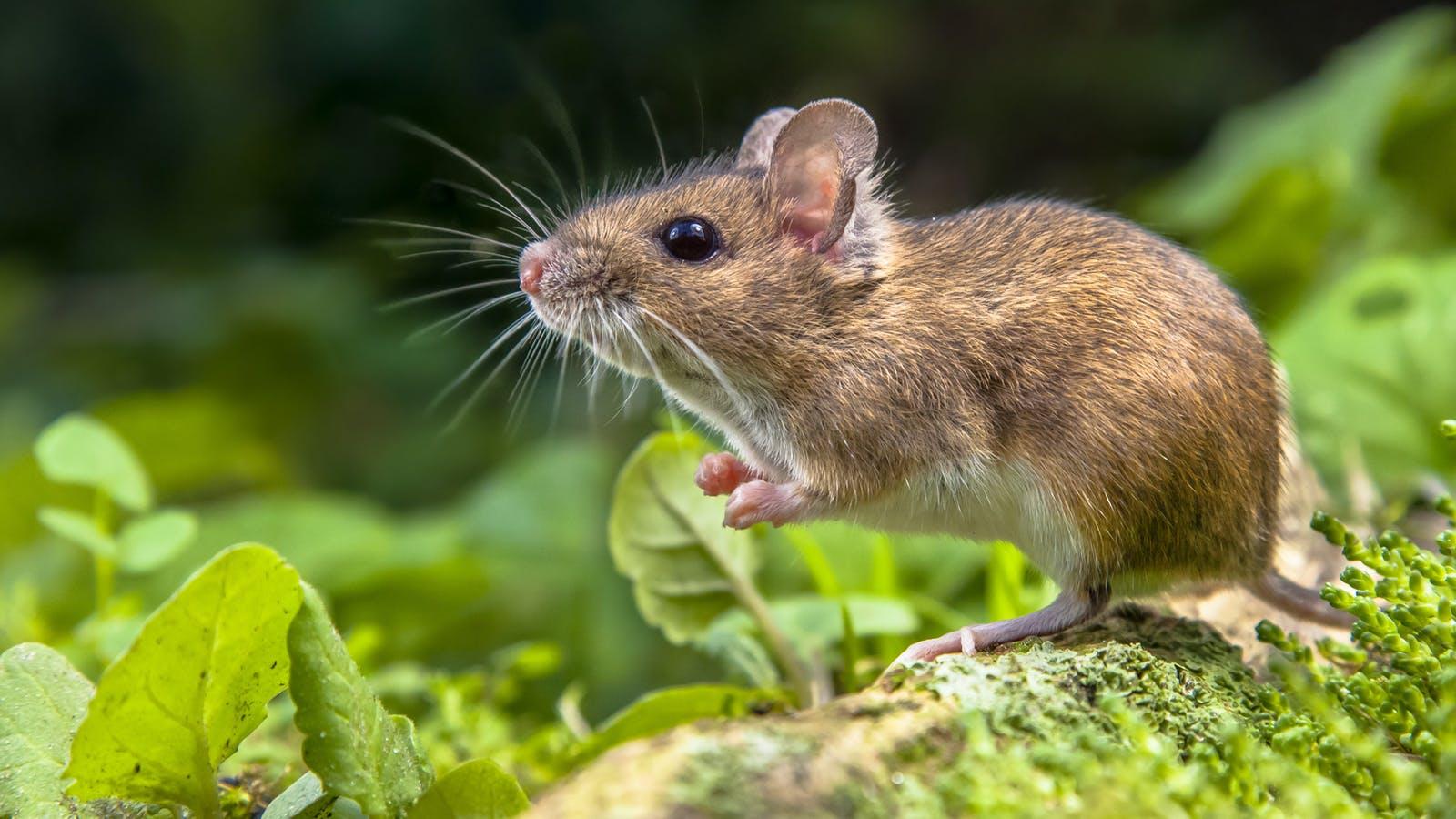
Mice are small, agile rodents known for their adaptability and rapid reproduction. They have pointed snouts, large ears, and long tails. They play a vital role in many ecosystems as prey for various predators.
- Region of Habitat: Found on every continent except Antarctica, thriving in forests, grasslands, urban areas, and agricultural fields.
- Scientific Name: Mus musculus (common house mouse).
- Feeding Habits: Omnivorous; they eat seeds, grains, fruits, insects, and food scraps.
- What Sound They Make: Mice communicate through high-pitched squeaks and ultrasonic sounds, often undetectable by human ears.
Fun Facts
Mice have excellent memory and can coordinate mazes efficiently. Their teeth never stop growing, requiring them to gnaw constantly to keep them trimmed.
6. Mink
Minks are small, semi-aquatic mammals with sleek, dark fur and long, slender bodies. They are excellent swimmers and skilled predators, often hunting both on land and in water.
-
Region of Habitat: Native to North America, Europe, and parts of Asia, found near rivers, lakes, and wetlands.
-
Scientific Name: Neovison vison (American mink), Mustela lutreola (European mink).
-
Feeding Habits: They are carnivorous, eating fish, amphibians, rodents, and birds, hunting primarily at night.
-
What Sound They Make: Minks produce growls, screeches, and hissing sounds when threatened or communicating with others.
Fun Facts
Mink fur is highly prized, leading to extensive farming for the fur trade. They are agile hunters capable of catching prey larger than themselves.
7. Minke Whale
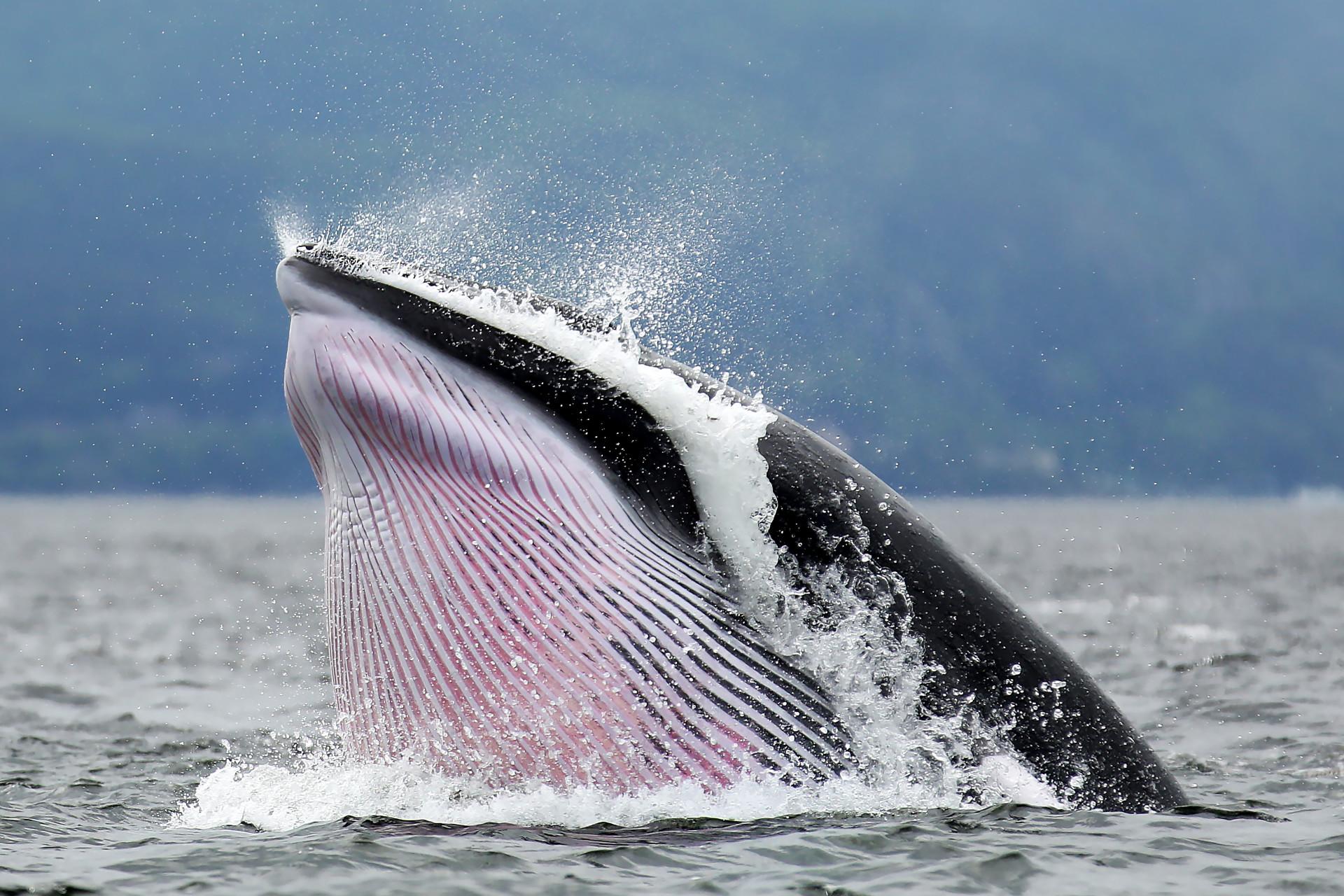
Minke whales are among the smallest baleen whales. Their streamlined bodies and white patches recognize them on their pectoral fins. They are known for their fast swimming speeds and elusive nature.
-
Region of Habitat: Found in oceans worldwide, from polar to tropical waters.
- Scientific Name: Balaenoptera acutorostrata (Common minke whale), Balaenoptera bonaerensis (Antarctic minke whale).
- Feeding Habits: They are filter feeders. They consume krill, small fish, and plankton by gulping large amounts of water and straining food through their baleen plates.
- What Sound They Make: Minke whales produce low-frequency vocalizations, including clicks and pulses, often used for navigation and communication.
Fun Facts
Minke whales are one of the few whale species still hunted in some countries, such as Norway and Japan. They can stay underwater for up to 20 minutes while diving for food.
8. Monarch Butterfly
Monarch butterflies are strikingly beautiful insects known for their orange and black wings with white spots. They are also famous for their long migratory travels, which span thousands of miles.
-
Region of Habitat: Found in North and Central America, with migrations reaching South America.
-
Scientific Name: Danaus plexippus.
-
Feeding Habits: Caterpillars feed on milkweed, while adults consume nectar from various flowers.
- What Sound They Make: Monarch butterflies do not produce sounds but can create a faint fluttering noise while flying.
Fun Facts
Monarchs migrate over 3,000 miles to reach their wintering grounds in Mexico. Their bright coloration warns predators of their toxicity.
9. Mongoose
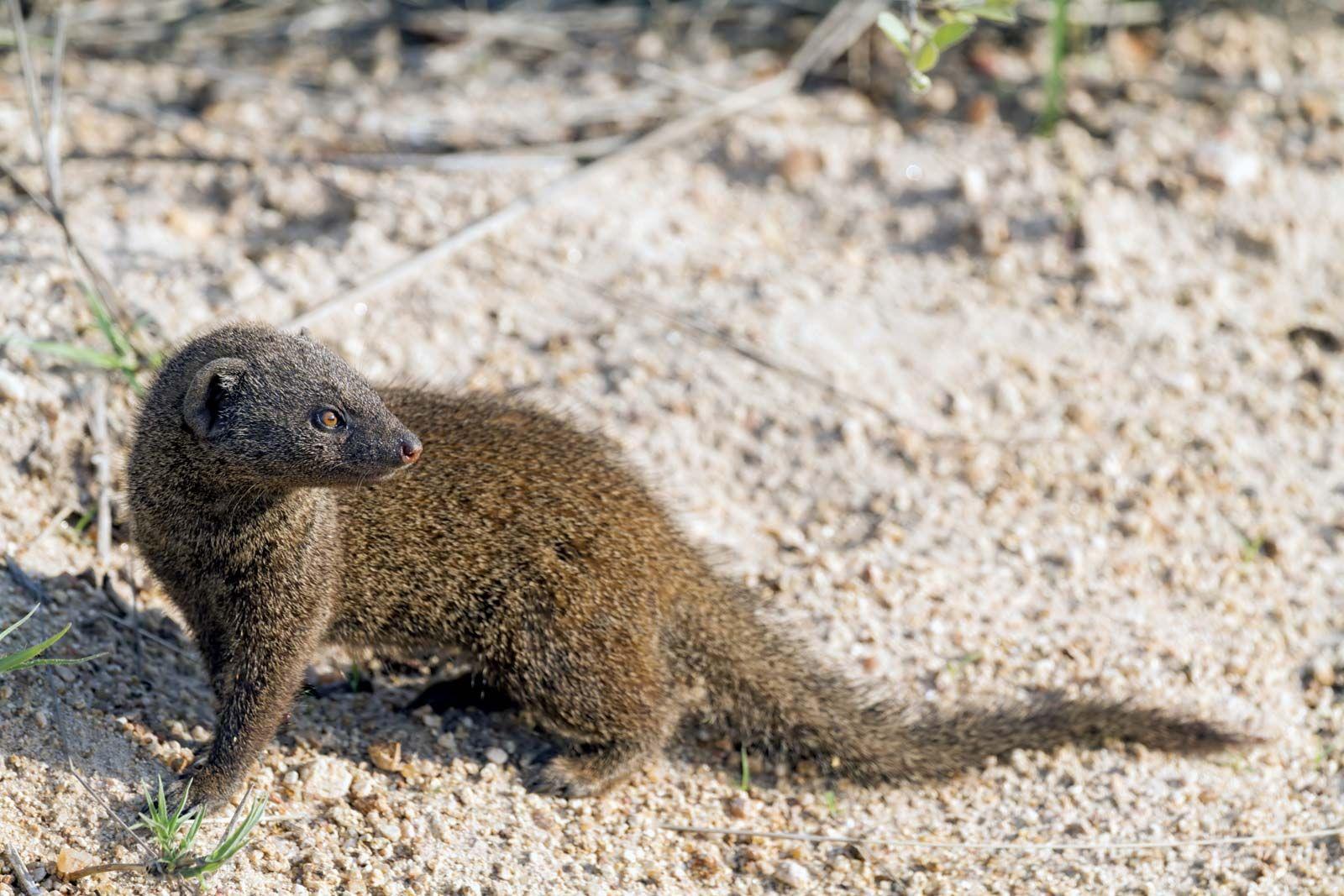
Mongooses are small, agile carnivores with elongated bodies, pointed faces, and sharp claws. They are known for their fearless nature, especially when battling venomous snakes.
-
Region of Habitat: Found in Africa, Asia, and southern Europe, often in grasslands, forests, and savannas.
-
Scientific Name: Herpestidae (various species).
-
Feeding Habits: Carnivorous; they eat insects, rodents, birds, reptiles, and eggs.
-
What Sound They Make: Mongooses produce chirps, growls, and high-pitched calls for communication.
Fun Facts
Some mongoose species are resistant to snake venom. They live in social groups and work together to hunt and defend territories.
10. Mountain Lion
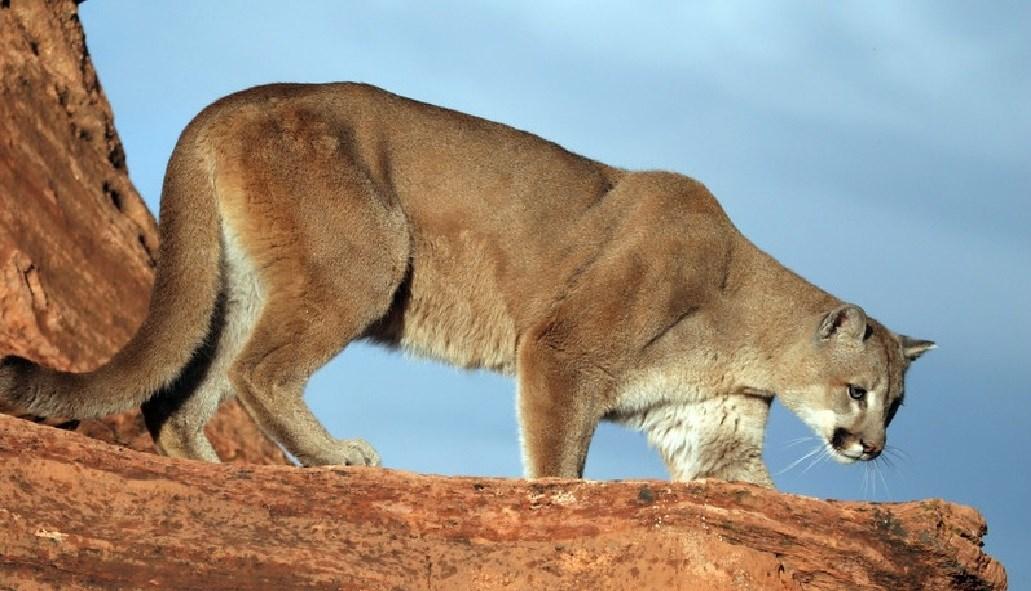
Mountain lions, also known as cougars or pumas, are large, solitary cats with muscular bodies and tawny coats. They are skilled hunters and capable of leaping long distances.
-
Region of Habitat: Found across North and South America in forests, mountains, and deserts.
-
Scientific Name: Puma concolor.
-
Feeding Habits: They are carnivorous, preying on deer, small mammals, and birds, using stealth and ambush tactics.
-
What Sound They Make: Mountain lions do not roar but produce growls, hisses, and eerie screams.
Fun Facts
Mountain lions can jump up to 18 feet vertically and cover 40 feet in a single bound. They have one of the largest geographic ranges of any land mammal in the Western Hemisphere.
11. Musk Ox
Musk oxen are large, shaggy-haired mammals that thrive in cold Arctic environments. Their thick fur and curved horns help them survive harsh winters.
-
Region of Habitat: Native to the Arctic tundra of North America and Greenland.
-
Scientific Name: Ovibos moschatus.
- Feeding Habits: Herbivorous; they graze on mosses, lichens, and grasses.
- What Sound They Make: Musk oxen produce grunts and snorts, especially during mating season.
Fun Facts
Their undercoat, called qiviut, is one of the warmest natural fibers in the world. When threatened, musk oxen form a defensive circle around their young.
12. Marlin
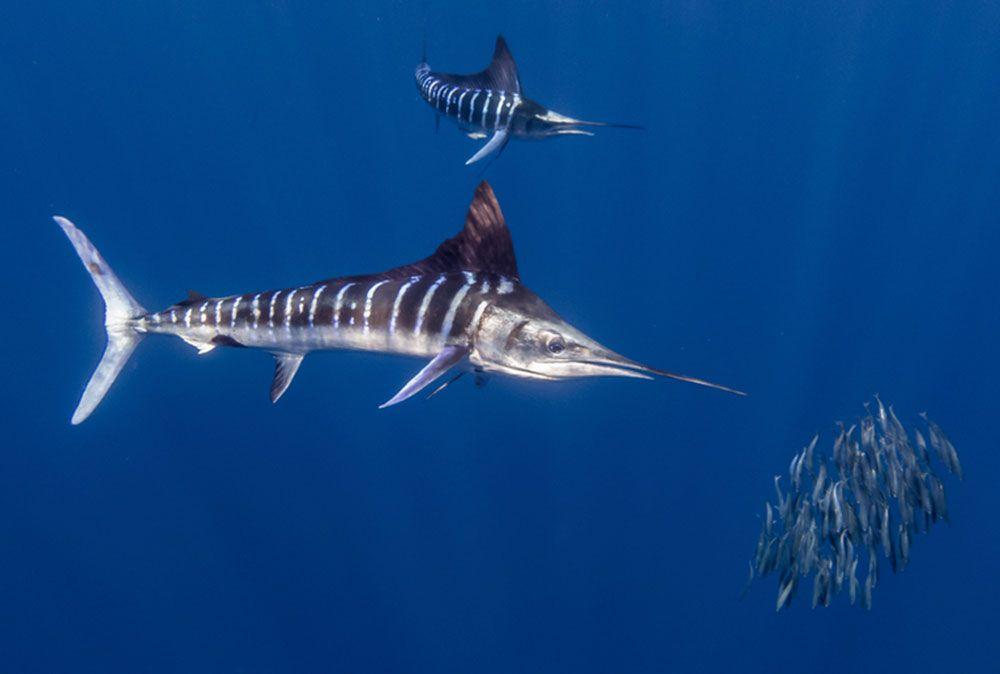
Marlins are fast and powerful predatory fish with elongated bodies, pointed snouts, and a distinctive dorsal fin. They are prized in sport fishing for their speed and agility.
-
Region of Habitat: Found in tropical and subtropical waters worldwide.
-
Scientific Name: Istiophoridae (various species).
-
Feeding Habits: Carnivorous; they hunt smaller fish and squid.
- What Sound They Make: Marlins do not produce vocal sounds.
Fun Facts
They can reach speeds of up to 60 mph, making them one of the fastest fish in the ocean. Marlins use their sharp bills to slash at schools of fish before eating them.
13. Manta Ray
Manta rays are large, graceful oceanic creatures with triangular pectoral fins and distinctive “horns” near their mouths. They are filter feeders gliding through the water to consume plankton.
-
Region of Habitat: Found in tropical and subtropical oceans worldwide.
-
Scientific Name: Manta birostris (giant manta ray).
-
Feeding Habits: Filter feeders consume plankton and small fish.
What Sound They Make: Manta rays do not produce sounds.
Fun Facts
Manta rays have the largest brain-to-body ratio of any fish. They can also recognize themselves in mirrors, indicating self-awareness.
14. Mountain Gorilla
Mountain gorillas are large primates with thick black fur, muscular builds, and intelligent social structures. They are closely related to humans and live in tight-knit family groups.
-
Region of Habitat: Found in the mountain forests of Rwanda, Uganda, and the Democratic Republic of Congo.
-
Scientific Name: Gorilla beringei beringei.
-
Feeding Habits: Herbivorous; they eat leaves, stems, roots, and fruit.
- What Sound They Make: Gorillas produce grunts, hoots, and chest-beating displays for communication.
Fun Facts
They share 98% of their DNA with humans. Mountain gorillas use tools, such as sticks, to help them forage.
15. Manatee
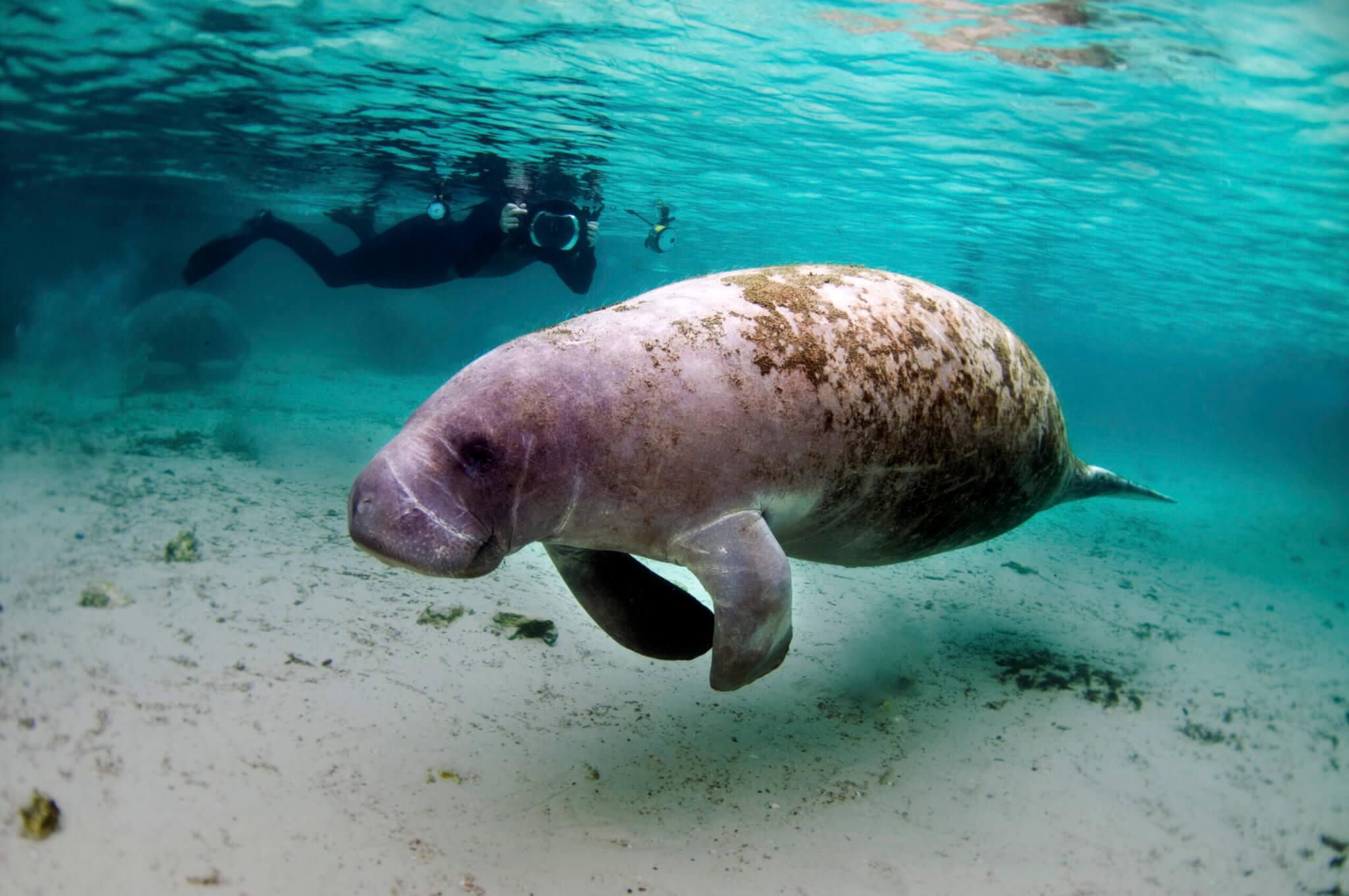
Manatees, also known as sea cows, are large, slow-moving marine mammals with paddle-like flippers and round bodies. They are gentle creatures that spend most of their time grazing on underwater plants.
-
Region of Habitat: Found in warm coastal waters of the Americas and West Africa.
-
Scientific Name: Trichechus (various species).
- Feeding Habits: Herbivorous; they consume seagrass and aquatic vegetation.
- What Sound They Make: Manatees produce squeaks and chirps for communication.
Fun Facts
Manatees can hold their breath for up to 20 minutes. They are closely related to elephants.
16. Mountain Tapir
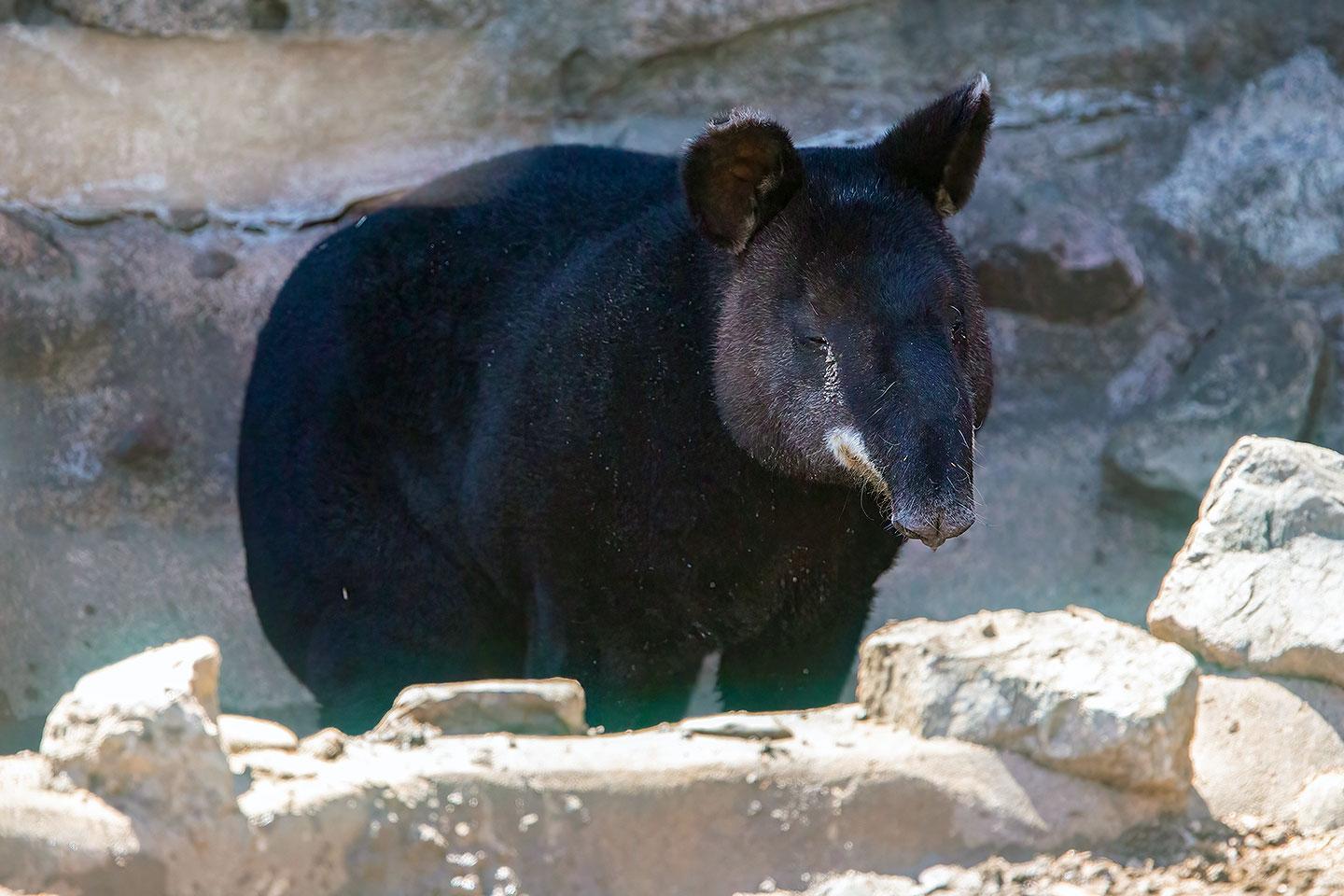
Mountain tapirs are large, herbivorous mammals with short, thick fur, a prehensile nose, and stocky bodies. They have a unique appearance with a rounded body, large hooves, and a relatively short tail. Tapirs are known for their gentle nature and slow movements.
-
Region of Habitat: Found in the cloud forests of the Andes Mountains in South America, particularly in Colombia, Ecuador, and northern Peru.
-
Scientific Name: Tapirus pinchaque
- Feeding Habits: Herbivorous; they feed on a variety of plant matter, including grasses, leaves, fruits, and tree bark. They use their prehensile nose to grab food.
- What Sound They Make: Mountain tapirs produce soft grunts, squeaks, and whistling sounds to communicate with each other, especially when feeling threatened or stressed.
Fun Facts
Mountain tapirs are the largest of the three species of South American tapirs.
They have excellent climbing abilities and are often found at elevations of up to 4,500 meters (14,800 feet).
17. Mountain Zebra
Mountain zebras are a unique species of zebra known for their distinctive physical characteristics and narrow body shape.
They are medium-sized with black and white stripes that cover most of their body. The pattern on their coats is unique to each individual, similar to human fingerprints.
-
Region of Habitat: Native to the mountainous areas of southwestern Africa, primarily in Namibia and Angola. They are found in rugged, arid terrains at elevations of up to 2,000 meters (6,500 feet).
-
Scientific Name: Equus zebra
- Feeding Habits: Mountain zebras are herbivorous, grazing on grasses, shrubs, and leaves. They are known to adapt to harsh, dry environments by feeding on the sparse vegetation available.
- What Sound They Make: Mountain zebras produce braying sounds similar to other species of zebras. These brays are used to communicate within their herds and to warn of danger.
Fun Facts
Mountain zebras are an endangered species whose population is under threat from habitat loss and poaching. They are excellent climbers and can negotiate steep, rocky terrain.
18. Mourning Dove
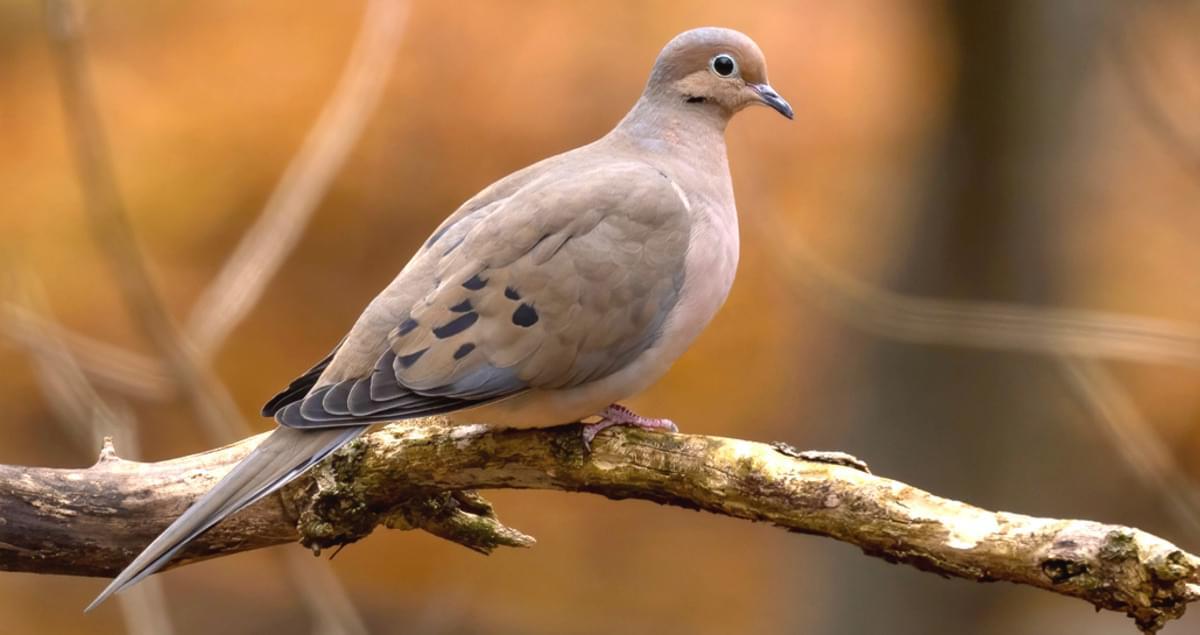
Mourning doves are slender, grayish-brown birds with long, pointed tails and distinctive cooing calls. They are commonly found across North America and are known for their gentle nature and graceful flight patterns.
- Region of Habitat: Found throughout North America, particularly in open woodlands, farmlands, and suburban areas. Mourning doves migrate seasonally, traveling to warmer regions during winter.
- Scientific Name: Zenaida macroura
- Feeding Habits: Granivorous; they primarily feed on seeds, including those from grasses, weeds, and crops. Mourning doves forage on the ground and are often seen in flocks.
- What Sound They Make: Mourning doves are known for their distinctive mournful cooing sound, which is used during courtship and to communicate with other doves.
Fun Facts
Mourning doves are one of the most abundant bird species in North America. They can fly at speeds of up to 55 miles per hour (89 kilometers per hour).
19. Mouse
Mice are small rodents that are found in a wide range of environments. They have a soft, fur-covered body, long, pointed noses, and large ears. Mice are known for their agility and ability to squeeze into tiny spaces.
-
Region of Habitat: Found worldwide, except for Antarctica. Mice inhabit forests, grasslands, urban areas, and agricultural lands, thriving in areas where food is abundant.
-
Scientific Name: Mus musculus
-
Feeding Habits: Mice are omnivorous, eating a variety of foods, including grains, seeds, fruits, and small insects. They are opportunistic feeders and often scavenge in human habitats.
- What Sound They Make: Mice produce high-pitched squeaks and ultrasonic sounds that are often used for communication, especially during social interactions or when in distress.
Fun Facts
Mice have excellent memory and can coordinate complex mazes to find food. They have a high reproductive rate, with females capable of having multiple litters each year.
20. Mouse Deer
Mouse deer, also known as chevrotains, are small, antelope-like creatures with short legs, large eyes, and a slender body.
Despite their name, they are not true deer but belong to a different family. They are the smallest hoofed mammals in the world.
-
Region of Habitat: Native to Southeast Asia, including the forests of India, Sri Lanka, and Southeast Asia. They are typically found in dense forests and forest edges.
-
Scientific Name: Tragulus (various species)
-
Feeding Habits: Herbivorous; they primarily feed on fruits, leaves, and small plants found in their forest habitats. They are known for their ability to forage at night.
- What Sound They Make: Mouse deer are generally silent but can emit high-pitched squeals and alarm calls when startled.
Fun Facts
Mouse deer are known for their quick, darting movements and are difficult to spot due to their camouflage. Despite their size, they have sharp, canine-like teeth used to help them cut through tough vegetation.
Some More Animals That Start With The Letter “M”
21. Mongrel
22. Monitor Lizard
23. Monkey
24. Monkeys
25. Monkfish
26. Monocled Cobra
27. Monte Iberia Eleuth
28. Moon Jellyfish
29. Moonglow Boa
30. Moorhen
31. Moose
32. Moray Eel
33. Morkie
34. Morpho Butterfly
35. Mosasaur
36. Mosasaurus
37. Moscow Watchdog
38. Mosquito
39. Moth
40. Motmot
41. Mottled Owl
42. Mountain Beaver
43. Mountain Bluebird
44. Mountain Cur
45. Mountain Feist
46. Mountain Goat
47. Mountain Gorilla
48. Mountain Gorillas
49. Mountain Lion
50. Mountain Tapir
51. Mountain Zebra
52. Mourning Warbler
53. Mouse Spider
54. Mousebird
55. Mozambique Spitting Cobra
56. Mud Dauber Wasp
57. Mud Snake
58. Mudi
59. Mudpuppy
60. Mudskipper
61. Mulard
62. Mule
63. Mule Deer
64. Mulga Snake
65. Mullet
66. Mullet Fish
67. Muntjac
68. Muscovy Duck
69. Musk Deer
70. Muskie
71. Muskrat
72. Musky Rat-Kangaroo
73. Mussurana Snake
74. Myna Bird
75. Macaque
76. Macaque Monkey
77. Macaque Monkeys
78. Macaroni Penguin
79. Macaw
80. Macgillivray’s Warbler
81. Machaeroides
82. Mackenzie Valley Wolf
83. Mackenzie Wolf
84. Macrauchenia
85. Madagascar Hissing Cockroach
86. Madagascar Jacana
87. Madagascar Red Owl
88. Madagascar Tree Boa
89. Madeiran Large White Butterfly
90. Madora Moth
91. Magellanic Penguin
92. Magnolia Warbler
93. Magyarosaurus
94. Mahi Mahi
95. Maiasaura
96. Maine Coon
97. Mal-Shi
98. Malayan Civet
99. Malayan Krait
100. Malayan Tiger
101. Malchi
102. Malteagle
103. Maltese
104. Maltese Mix
105. Maltese Shih Tzu
106. Maltipom
107. Maltipoo
108. Mamba
109. Mammoth
110. Mamushi Snake
111. Man of War Jellyfish
112. Manakin
113. Manchester Terrier
114. Mandarin Rat Snake
115. Mandrill
116. Maned Wolf
117. Mangalitsa Pig
118. Mangrove Snake
119. Mangrove Snapper
120. Manta Ray
121. Mantella Frog
122. Mantis Shrimp
123. Manx Shearwater Bird
124. Map Turtles
125. Mara
126. Marabou Stork
127. Marans Chicken
128. Marble Fox
129. Maremma Sheepdog
130. Margay
131. Marine Angelfish
132. Marine Hatchetfish
133. Marine Iguana
134. Marine Toad
135. Markhor
136. Marlin
137. Marmoset
138. Marmot
139. Marsh Frog
140. Marsican Brown Bear
141. Marsupial Mole
142. Marten
143. Masai Giraffe
144. Masiakasaurus
145. Masked Angelfish
146. Masked Finfoot Bird
147. Masked Palm Civet
148. Mason Bee
149. Massasauga
150. Mastador
151. Mastiff
152. Mastiff Mix
153. Mastodon
154. Mauritius Blue Pigeon
155. Mauzer
156. May Beetle
157. Mayan Cichlid
158. Mayfly
159. Meadowlark
160. Meagle
161. Mealworm Beetle
162. Mealy Parrot
163. Mealybug
164. Meerkat
165. Megalania
166. Megaloceros
167. Megalochelys
168. Megalodon
169. Megamouth Shark
170. Meganeura
171. Megapode
172. Megatherium
173. Meiolania
174. Mekong Giant Catfish
175. Merganser
176. Mexican Alligator Lizard
177. Mexican Black Kingsnake
178. Mexican Eagle
179. Mexican Fireleg Tarantula
180. Mexican Free-Tailed Bat
181. Mexican Grey Wolf
182. Mexican Mole Lizard
183. Mexican Wolf
184. Microraptor
185. Midget Faded Rattlesnake
186. Miki
187. Military Macaw Parrot
188. Milk Snake
189. Milkfish
190. Milkweed Aphid
191. Milkweed Beetle
192. Millipede
193. Mini Labradoodle
194. Mini Lop
195. Miniature Bull Terrier
196. Miniature Horse
197. Miniature Husky
198. Miniature Pinscher
Wrapping It Up
From the mighty Mountain Gorilla to the Minuscule Maggot, the trip through the animal kingdom’s “M” section reveals nature’s incredible diversity.
After analyzing across continents and oceans, uncovering fascinating creatures that inhabit every corner of our planet.
These remarkable animals, if they soar through the skies like the Mourning Dove, prowl mountain ranges like the Mountain Lion, or glide through tropical waters like the Manta Ray, each play vital roles in their ecosystems.
Their unique adaptations—the Mongoose’s venom resistance, the Monarch Butterfly’s incredible migration, and the Merekat’s cooperative social structure—showcase growth ingenious solutions to survival challenges.
The quest of these magnificent “M” creatures reminds us of the extraordinary diversity that makes the natural world so intriguing and worthy of our protection.

